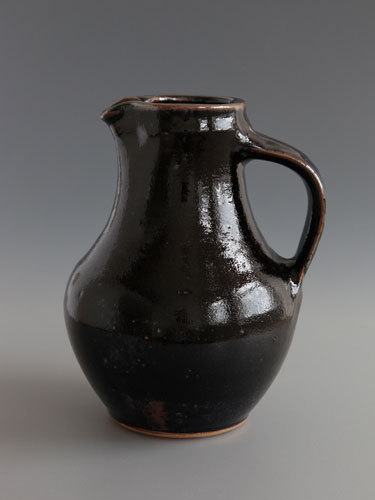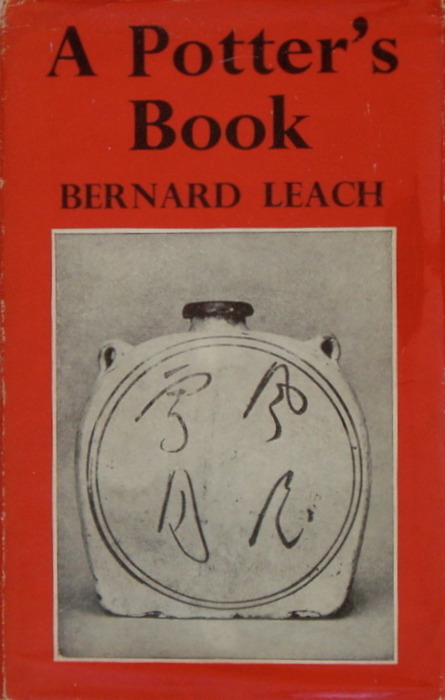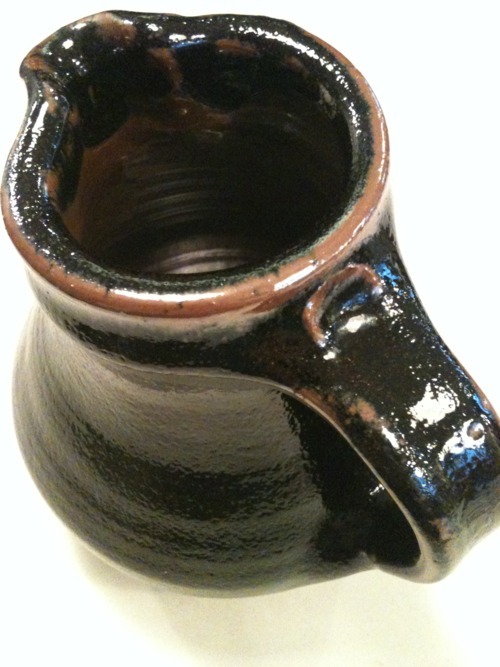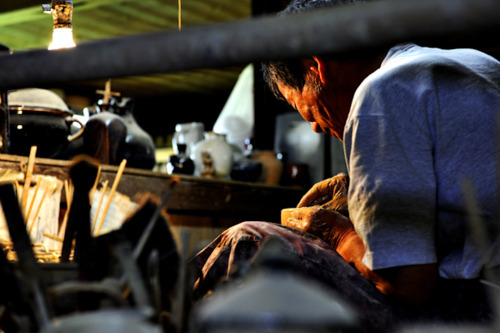Syussai Pottery

Our recently arrived – and long awaited - delivery of Japanese products included amongst it a small selection of Syussai pottery. The story of the Syussai kiln is a fascinating one, a story that crosses back and forth across the globe and which makes clear the connections between English Arts and Crafts and Japanese Mingei, between British studio potters and Japanese craftsmen and which links the Cornish town of St. Ives with a small kiln on the banks of the Hiikawa river.
The Syussai kiln was established in 1947 by five friends who each shared the aim of making simple, utilitarian crockery for everyday use. Their work was influenced by the Mingei “folk craft” movement founded by Yanagi Muneyoshi in the early years of the Twentieth Century, and which saw pure and natural beauty in ordinary objects created by unknown craftsmen for practical purposes. Mingei products celebrate the work of the artisan and the fulfillment of an object’s innate purpose.

Tatano Hiromitsu, one of the founders of the Syussai kiln, learnt about Mingei through his studies of William Morris and the Arts and Crafts Movement, the celebration of artisan craftsmanship which was in part a reaction against the industry and mass production of late Victorian England. Together with Kawai Ganjiro, an associate of Yanagi, Tatano came up with the idea of creating a kiln where individual craftsmen could create utilitarian pottery in a traditional manner.

The Syussai kiln was strongly influenced by the English potter Bernard Leach. Born in Hong Kong, Leach studied at the London School of Art and travelled and worked extensively in Japan and China before, in 1920, opening his own traditional Japanese “climbing kiln” in St Ives with his friend the Japanese potter Shoji Hamada. For the next 50 years, this kiln was the focal point for the studio pottery movement. Throughout Leach’s career he advocated that the potter’s focus should not be on decoration or embellishment but in the tactile and functional perfection of objects designed for everyday use. This belief, shaped by the principles of Mingei, defined the studio pottery movement and the St Ives kiln became the college for a new generation of potters making their way through Leach’s apprentice system.

Leach’s philosophy of pottery is contained in his classic A Potter’s Book. The required manual for any studio potter, practical tips are combined with aesthetic ideals and Leach’s interpretation of the values of Mingei - “Enduring forms are full of quiet assurance. Overstatement is worse than understatement.”

The Syussai kiln is one of the few remaining where Bernard Leach originally stayed and where he shared his designs and expertise; the jug we are selling is one of Syussai’s Leach products. The most noteworthy feature of it is the handle, in a Western style, and which Leach called the ‘wet handle’. This is made from a ball of clay and shaped using the heat and humidity of the hand, imagining a branch growing from the trunk of a tree. The shape of the potter’s thumbprint remains, making an ergonomic grip. Even within Syussai there are only a few craftsmen who can make this handle.

After 60 years, the Shussai kiln still insists on using local materials for its clay and glazes, and despite its fame, it continues to make practical crockery for ordinary people in the Izumo area. We are delighted to be able to provide this beautiful pottery to our customers here in England. The thread between English Arts and Crafts and Japanese Mingei, between St Ives and Hiikawa, runs through this Syussai pottery and defines the concept of studio pottery as laid down by Leach - the Marriage of East and West.
The Syussai jugs are available in three sizes from our Redchurch Street store.
The Leach Pottery in St Ives is still open as a studio, museum, gallery and shop.




